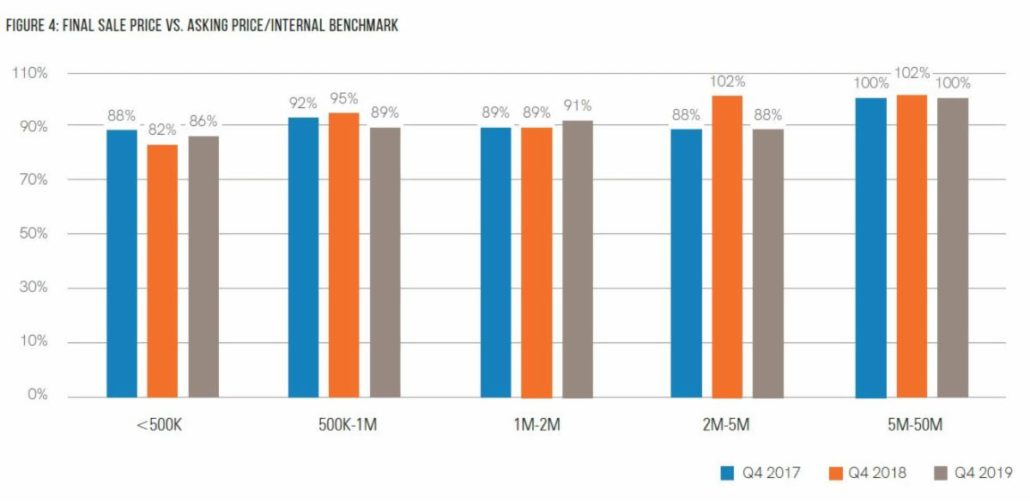Smart preparation and planning can help you build a business that’s ready to sell when you are. Ideally, you’ll start preparing for sale early in your business life-cycle. The more you know about what buyers want, and what you can expect from the market, the more options you’ll have to exit your business and maximize value upon exit.
Seven Steps in the M&A sale process:
1. Status and strategy: The first step is to check in with yourself and your business. Are you ready to sell? Is the timing right in terms of market conditions and business performance? Does the value of your business match your goals? What are your exit options and how might different scenarios affect your readiness?
We recommend a status and strategy check every couple of years. A regular Estimate of Value can provide important benchmarking information. It’s an affordable tool to ensure your business is on track to hit your value milestones. If not, we can show you how to unlock hidden value in your company while you still have ample time to make adjustments.
2. Valuation enhancement: The value enhancement stage is really part and parcel of status and strategy. Sometimes we may suggest some changes that would make your business more salable and increase its value in the marketplace.
Depending on your goals, this might be a six-month period of minor changes or a multi-year strategy to make your business more desirable to buyers who will bring the most value. In an ideal world, we’d talk to business owners years before they actually wanted to exit.
Early planning allows you to better time the market so you can exit during a market peak. The more time we have, the more room we have to make meaningful changes that impact business value.
3. Preparation: Before going to market, we work with the seller in an intense period of preparation and information gathering. We’ll recast your financials to highlight your cash flow and incorporate projections to show where the company is going. And, depending on your business, we may also recommend select pre-due diligence activities to uncover issue areas that might be of concern to buyers.
At this stage, we’re also doing exhaustive buyer research. Businesses in the lower middle market often have an enormous pool of potential buyers. Some of these potential buyers come from your contact lists, some come from our global network, and others from our sizable investment in data mining tools that allow us to target the most relevant, qualified set of possible buyers.
4. Going to market: As we go to market, we’re focused on getting in front of the right buyers at the right time, telling your story, and protecting your confidentiality. It’s all timed and carefully packaged in a sensitive mix of marketing and preliminary negotiation that should, ideally, bring multiple buyers to the table in a competitive auction environment.
Part of the marketing process involves pre-qualifying would-be buyers, securing nondisclosure agreements, and tracking information access via a secure data room. At this stage, we’re carefully weeding out the tire-kickers and smoking out “buyers” who are more interested in competitive intel than a legitimate acquisition.
5. Negotiation:Generally, sellers get better results when negotiating with multiple qualified buyers. The market is hot and buyers know there will be competition for the best deals.
The key is to control the process with respect and professionalism. We provide clear, consistent timelines and expectations. There’s a lot of activity out there right now, and buyers will pass over deals with inexperienced advisors who might waste their time.
Purchase price is only one point of negotiation. Deal structure, financing, employment contracts, working capital, reps and warranties are just some of the bigger issues that factor in. We will negotiate with multiple potential acquirors until you find the best fit for what is important to you.
6. Due diligence to closing: At this stage, your target buyer has a period of time to complete due diligence and confirm they want to proceed with the deal. Together, both the buyer and the seller teams will be working through legal and financial requirements to ensure everyone is on the same page, appropriately protected, funded, and ready to close on schedule.
7. Post-closing transition: After closing, you’re usually involved in a transition period. How long you’re staying and in what capacity will have been hammered out in earlier negotiations, based on the type of buyer and deal structure you approve. Post-closing commitments may involve transitioning relationships, explaining trade secrets, and otherwise helping set the new owners up for success.
Sellers routinely tell us how surprised they are at how much time the sale process took and how glad they are they didn’t try to run a sale process on their own. The final year before a transition is a critical time when strong business performance matters most.
At the end of the day, you want to exit your business with peace of mind and satisfaction, knowing you got what you wanted and didn’t leave money on the table. Sellers who start planning early can sleep easy at night confident that they did the best thing for their business and their family.
It’s never too early (or too late) to have a conversation about maximizing value in your business. For further information contact Al Statz, 707-781-8580 or alstatz@exitstrategiesgroup.com.














